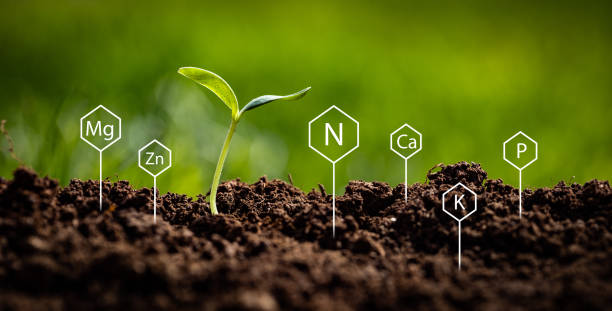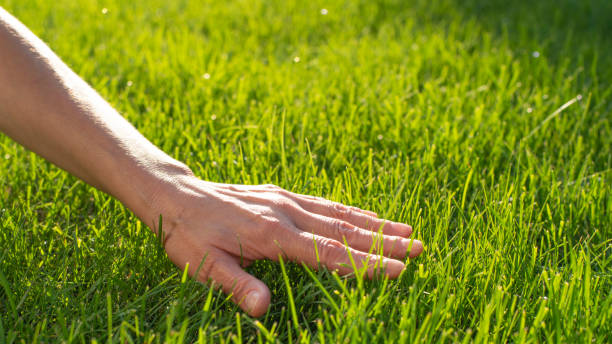
Phosphorus is an essential nutrient for healthy lawns, and it can make the difference between a lush green turf and a patchy brown mess. It helps grass develop strong roots, encourages thick growth, and aids disease resistance. Without enough phosphorus in your soil, your lawn won’t be able to reach its full potential. So, understanding what phosphorus does for your grass is critical if you want the best-looking lawn on the block. In this article, we’ll explore why phosphorus matters for lawn care and how you can use it to boost your yard.
What is Phosphorus?
Phosphorus is a mineral nutrient found in soil. It helps plants absorb other nutrients from the soil, including nitrogen and potassium. Without enough phosphorus, plants struggle to grow properly and may be more vulnerable to disease, pests, and drought stress.
How does Phosphorus Help Lawns?
Phosphorus is one of the three essential nutrients to maintain a healthy lawn. It helps grass and other plants utilize energy from the sun, build strong roots, and produce flowers or seeds.
Without adequate phosphorus, lawns become stressed and can turn brown and die. So how does phosphorus help lawns? Let’s take a closer look at how this vital nutrient helps grass thrive.
The Role of Phosphorus in Lawn Nutrition
Phosphorus is one of three macronutrients necessary for plant growth and development (the other two are nitrogen and potassium).
It helps plants absorb energy from the sun, build strong roots, and produce flowers or seeds. In turfgrass, phosphorus promotes root growth, disease resistance, and drought tolerance. In other words, it helps your lawn stay healthy and green!
How Much Phosphorous Do You Need?

The amount of phosphorus you need for your lawn depends on several factors, including soil type, climate, water availability, and grass species. Generally speaking, if your soil test results show that you have adequate levels of phosphorus present, then you don’t need to add any additional fertilizer containing this vital nutrient.
However, suppose your soil tests indicate that there are low levels of phosphorous. In that case, you should consider adding some additional fertilizer that contains this vital nutrient to ensure your lawn stays healthy.
Phosphorus is essential for maintaining a healthy lawn. It helps grass absorb energy from the sun, build strong roots, and increase disease resistance and drought tolerance, so it’s essential to ensure that your soil has adequate levels of this vital nutrient at all times!
If not, adding some additional phosphorous fertilizers can help keep your lawn looking lush green all year round!
For website owners new to gardening or caring for their yards, understanding phosphorous’s role in keeping a yard healthy is invaluable knowledge worth exploring further!
When should I apply phosphorus to my lawn?
If you’ve noticed that your lawn isn’t as lush and healthy as it used to be, applying phosphorus might be the answer. But when should you apply it? And how much is enough? Read on to learn the answers to these questions and more.
The best time to apply phosphorus to your lawn is in the fall or early spring. This ensures that the soil temperature won’t be too cold for the phosphorus to break down properly and also gives plants a chance to soak up the nutrients before high temperatures set in.
You should also take into account your local climate. Areas with mild climates may benefit from an additional phosphorus application in late summer, while cooler regions should avoid any late-season applications altogether.
What Kind Of Phosphorus Should I Use?
The type of fertilizer you choose will depend largely on what type of grass you have. For instance, cool-season grasses like fescue and bluegrass thrive on fertilizers containing higher amounts of nitrogen than phosphorus (such as a 20-10-10 ratio).
Conversely, warm-season grasses such as bermudagrass and zoysiagrass require a fertilizer with a higher amount of phosphorus (like a 16-20-0 ratio). If you’re unsure which kind of fertilizer is best for your lawn, ask your local nursery or garden center for advice.
How Much Is Enough?

Generally, about two pounds of actual nitrogen per 1,000 square feet of lawn (or one pound of actual nitrogen per 1,000 square feet if you’re applying a slow-release fertilizer) is recommended during each application.
However, soil tests can help determine exactly how much phosphate your lawn needs; most county extension offices or private laboratories can conduct this test.
It’s important not to overapply fertilizers containing phosphorus because excessive amounts can cause environmental damage and even kill off beneficial organisms in the soil.
Applying phosphorus correctly can make all the difference in keeping your lawn looking its best. By following these tips—applying them at just the right time with just the right amount—you can ensure that your lawn gets all the nutrients it needs without causing any harm to the environment around it.
Start by getting a soil test done, so you know precisely how much phosphorous your lawn needs—and then get started! Your lawn will soon look better than ever with proper care and maintenance!
How do I Make Sure My Lawn Gets Enough Phosphorus?

It’s essential to get your soil tested at least once every two years to determine if it needs any additional nutrients like phosphorus.
If your soil test shows that it does need extra phosphorus, you should use a fertilizer that contains phosphorous as one of its primary ingredients (it should be noted on the label).
Always follow the instructions on the label for proper application rates; too much fertilizer can damage your grass or contaminate local waterways with excess nutrients.
What does too much phosphorus do to lawn?
Phosphorus is one of the most important elements for growing a lush, healthy lawn. This essential nutrient helps with root development and promotes robust and vibrant grass growth.
However, too much phosphorus can be detrimental to your lawn and lead to various issues. Let’s take a closer look at what happens when you give your lawn too much phosphorus.
How Can You Tell if Your Lawn Has Too Much Phosphorus?
The best way to determine if your lawn has too much phosphorus is to have a soil test done by professionals. The test will measure the number of nutrients in the soil, including nitrogen, potassium, and phosphorus.
If the levels are too high—especially for phosphorus—the experts will recommend ways to adjust them so they’re back within acceptable ranges. They may suggest adding compost or using fertilizer made without added phosphorus to help balance out those levels naturally.
Not using more than necessary when fertilizing your lawn is essential because excessive amounts of any nutrient—including phosphorus—can harm your grass and local water sources.
A soil test performed by professionals is the best way to ensure that you don’t add too much fertilizer to your yard to maintain a healthy balance without adversely affecting your environment. With the proper care, you can keep your lawn looking great all year round!
Conclusion
Overall, phosphorus is essential for a healthy lawn, but too much can have damaging effects. The best way to ensure your soil has just the right amount of nutrients is to get a professional soil test done. This will help you determine how much fertilizer and other nutrients should be added in order to create an ideal balance without causing any environmental damage or harm to the grass itself. With proper care and maintenance, you can keep your lawn looking beautiful year-round!





